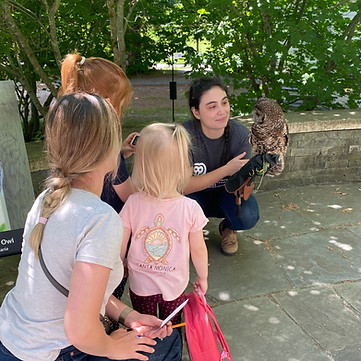
What's Next?
The work ahead of us will be a generational journey as species conservation is a long-term endeavor. Take the California Condor Reintroduction and Recovery Program for example. Condors were at the brink of extinction in 1982 with only 22 individuals remaining, and now after decades of dedicated conservation the total population is up to over 300.
Here at the Northern Spotted Owl Breeding Program (NSOBP), we are always growing and learning.
The NSOBP is expanding our outreach and education programs to be more interactive and inclusive. Our team is working in partnership with Indigenous educators and knowledge-keepers to incorporate cultural connections and history. Each year we increase the number of presentations for classrooms, camp programs, community events, and much more! These educational presentations are off-site to minimize disturbance to the owls and their way of life.
OUTREACH AND EDUCATION

.jpg)
We hope to secure funding to house northern flying squirrels for live training of pre-release spotted owls. Currently, pre-release owls are fed live mice and rats, but flying squirrels and woodrats are their primary food source in the wild. The behaviour of these rodents differs as rats and mice stay on the ground and move linearly, while flying squirrels are arboreal and move in a “corkscrew” pattern. It's important that released owls are familiar with hunting traditional food sources so they can find food year-round.
FLYING SQUIRRELS
.jpg)

The ultimate goal of the NSOBP is to create a self-sustaining population in the wild. For us, bringing spotted owls home to the skies their ancestors once flew is actionable reconciliation for the owls, the land, and Indigenous peoples. Releases are ongoing. We are also committed to learning and finding meaningful ways to support the owls released into the wild.


